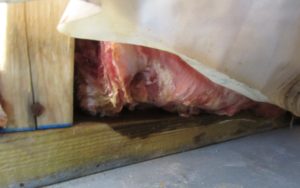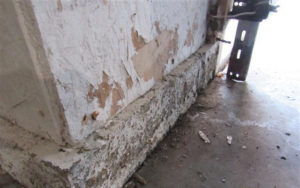Closer Look Home Inspectors | Home Inspection 507-721-2018

A key part of home inspections is looking for any signs of water damage. While water is good for people and plants, it’s bad for homes, and it must be kept out in order for a structure to remain strong.
Contractors incorporate into their home building many methods for keeping out water, including installing moisture barriers on the roof, flashing, house wrap, caulking and more.
But it doesn’t always work. Buildings get old, and materials wear down. Rainwater or groundwater can sometimes infiltrate a home. Or damage can come from within, from leaky pipes or appliances.
If a home has water damage, you must find out where it came from and if the problem has been fixed.
Our certified and qualified home inspector will look for the following signs of moisture in the home:
- Wet or pulpy underside of roof- A home’s roof should be waterproof. If it isn’t, it needs to be fixed. But if the breach is small and it hasn’t rained for a while on the day of your inspection, the underside of the roof might not be wet. How can you be sure there aren’t any leaks? Our home inspector will look for signs such as, stains, soft spots, or wet insulation.
- Stains on ceiling- These can be from a roof leak, a pipe leak, or even condensation from pipes. They can be any size and are usually light with a brownish border.

- Peeling paint- This is most frequently seen around windows, in bathrooms or outdoors. When wood is wet, the moisture needs to escape. The paint holds in the moisture, and it needs to break through. The more often the wood is wet, the faster the paint peels.
- Buckling, crumbling or warping walls- Depending on what the walls are made of, water damage can vary. Wallboard all but disintegrates in the presence of water. The paper and the paint may hold it together, but it will never be flat again. Plaster, on the other hand, will bubble and buckle.
- Mold- The inspector will look for any black, brown, green, orange or any other colored mold they may find in a home is definitely a problem. It needs to be cleaned up, but more importantly, the source needs to be identified and remedied. It may be a leak, but if it’s just a naturally damp environment — like a basement — a dehumidifier might be a good remedy.
- Musty smell- Some basements will always have a slight damp odor — this is normal. But if it’s a strong smell, this may signify a bigger problem. In this case, it might be best to recommend a professional mold test if this is something you don’t offer as an add-on to your home inspection.
When you have a moisture inspection done on your home it gives you the benefit of knowing the current issues or being able to stop potential problems turning into bigger ones. Give us a call today to schedule your moisture inspection!